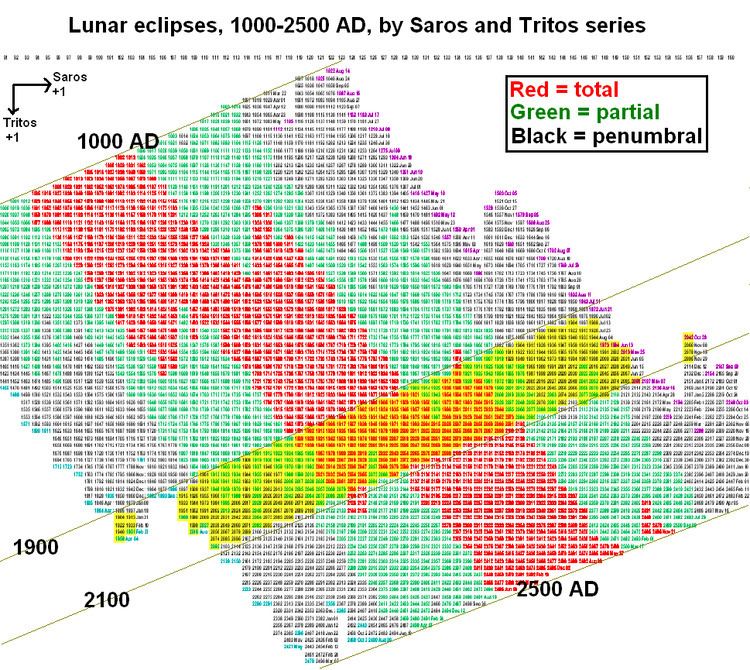 | ||
The tritos is an eclipse cycle of 3986.63 days. (about 1 month short of 11 years)
It corresponds to:
The length of the tritos is equal to the length of the inex minus the length of the saros eclipse cycles. Therefore, eclipses that occur 1 tritos apart (i.e. both eclipses belong to the same tritos series), belong to two different saros series with series numbers that differ by one.
The pre-Columbian Maya used a calculation in their own observations of eclipse cycles in which a period of three tritoses was approximated by 11960 days, based on 46 periods of their tzolk'in calendar (i.e. 46 × 260 days). The number of anomalistic months in a tritos (144.68), having a fraction near 2⁄3, means every third eclipse is in nearly the same position in the elliptical orbit, so eclipses will have similar timing and total versus annular quality.
Solar and lunar eclipse event dates will repeat on this cycle for about 700 years.
Example solar Tritos series
This eclipse is a part of a tritos cycle, repeating at alternating nodes every 135 synodic months (≈ 3986.63 days, or 11 years minus 1 month). Their appearance and longitude are irregular due to a lack of synchronization with the anomalistic month (period of perigee), but groupings of 3 tritos cycles (≈ 33 years minus 3 months) come close (≈ 434.044 anomalistic months), so eclipses are similar in these groupings.
